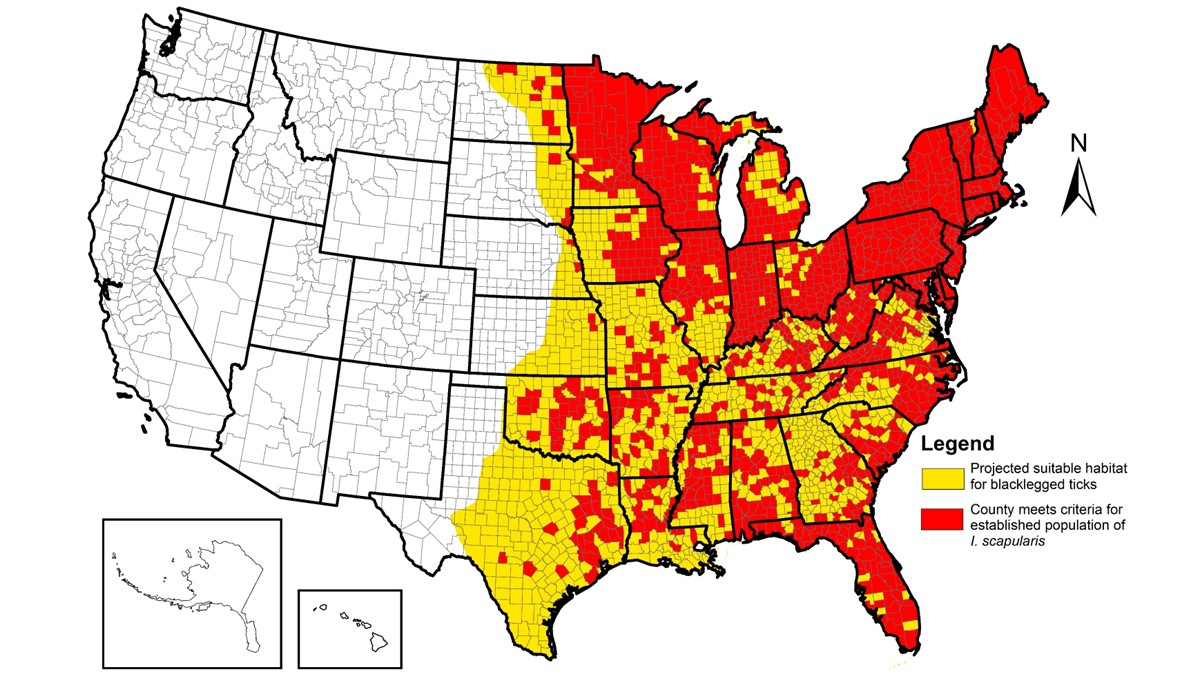The blacklegged tick (also known as the deer tick) is present everywhere in Wisconsin where there is forested habitat. This tick can spread Lyme disease, anaplasmosis, babesiosis, ehrlichiosis (due to Ehrlichia muris eauclairensis) and Powassan virus.

Quick Facts:
Common Name: Blacklegged Tick or Deer Tick
Scientific Name: Ixodes scapularis
Pathogens Transmitted: Lyme disease, anaplasmosis, babesiosis, ehrlichiosis (due to Ehrlichia muris eauclairensis) and Powassan virus.
Medical/Veterinary Importance: Transmits many diseases to both humans and animals. This tick is of great concern for public health.
Geographical Range: Widely distributed across the eastern United States.
Map of the United States showing projected suitable habitat for Ixodes scapularis ticks and counties with established Ixodes scapularis populations through 2024 (CDC).

Distribution

 Student teams hit the woods each summer to collect deer tick nymphs and then determine how many are infected. The map above shows that a range of 11-30% of the nymphs were infected in 2016-17 but the average was about 15-20%.
Student teams hit the woods each summer to collect deer tick nymphs and then determine how many are infected. The map above shows that a range of 11-30% of the nymphs were infected in 2016-17 but the average was about 15-20%.
Life Stages
Deer ticks have three life stages:
Larva→Nymph→Adult
The larva becomes a nymph which then becomes an adult. This takes about 2 years. Nymphs are of greatest public health concern, because they are just 2 millimeters (1/10 of an inch) long and are hard to spot and remove quickly.

Here is a picture of a blood fed nymph that was attached for 4 days: 
References
X. Lee, K. Hardy, D. H. Johnson, S. M. Paskewitz, Hunter Killed Deer Surveillance to Assess Changes in the Prevelance and Districution of Ixodes scapularis (Acari: Ixodidae) in Wisconsin, Journal of Medical Entomology, Volume 50, Issue 3, 01 May 2013, Pages 632-639, https://doi.org/10.1603/ME12234
https://www.cdc.gov/ticks/data-research/facts-stats/blacklegged-tick-surveillance.html